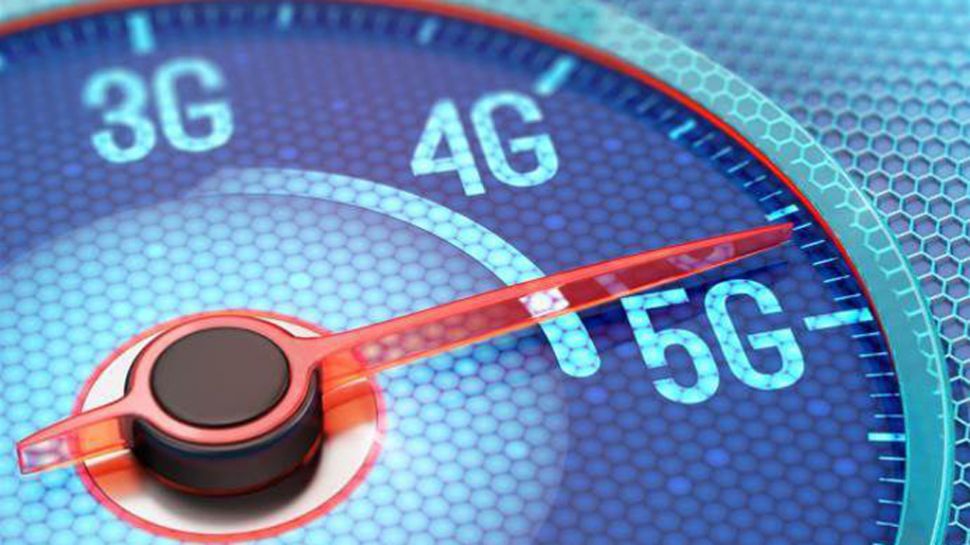How 5G and foldable phones will benefit streaming companies
Larger devices and lower latency make the perfect pair for streaming

5G and foldable phones: have there been any technology trends in the news as much as these two?
5G promises massive capacity and low latency beyond what 4G can deliver. It brings greater speed (the ability to move more data faster), lower latency (everything’s more responsive), and will increase the maximum number of connected devices at once (a huge boon the mobile operators, and anyone connecting sensors, IoT, and smart devices). It’s a major investment for the mobile ecosystem over the next decade and could have a massive impact on the kinds of mobile apps delivered in the future.
Foldable smartphones are arguably the most exciting mobile phone innovation we’ve seen in a decade, though clearly not yet ready for primetime. They bring a screen double the size of a normal smartphone, yet still fit in your pocket. The smartphone is suddenly a tablet.
Both have their share of challenges to solve before they hit the mainstream, but the promise of the combination of the two is massive for one industry in particular: streaming companies.
- 5G: How will businesses benefit?
- Foldable phones: all the rumored and confirmed foldable handsets
- 5G's impact on the future of work
Streaming companies have redefined media
Twitch has between 2.2 and 3.2 million monthly broadcasters and averages 999,174 viewers connected at a time. Hotstar, India’s largest streaming service, smashed its own streaming record with 18.6 million concurrent users for the IPL final. And Netflix’s Bandersnatch showed that interactive storytelling could shape the future of entertainment.
All these streaming service successes have something in common - they build interactivity and deliver new ways to engage audiences on top of the streaming video itself and do it at massive scale. They are built off the larger technological trend of ‘connected shared experiences:’ connecting audiences in a virtual environment to communicate, collaborate, interact, and share in realtime as they would in the real world.

5G and foldable phones
5G will empower app developers to deliver high-performance, immersive, data-intensive applications, and let them connect more devices, and stream data between them, faster. Foldable phones double screen real estate.
Are you a pro? Subscribe to our newsletter
Sign up to the TechRadar Pro newsletter to get all the top news, opinion, features and guidance your business needs to succeed!
With increased network capabilities and a ton of new real estate available on the screen, streaming apps - whether for live events, gaming, or communication (or all three) - can now deliver immersive streaming experiences and add new ways to engage and retain viewers. This means bigger audiences, longer engagement and retention of those audiences, and, as a result, new and more valuable revenue streams.
The mobile opportunity
Mobile apps accounted for 57 percent of all digital media usage in 2018, making them the primary driver of digital media consumption. And the mobile share of global digital video plays has grown from 14% in 2013, to 62% in 2018. In short, audiences are consuming streamed video through mobile devices at a growing rate, despite slower speeds and unreliable connectivity when compared to web browsers connected via WiFi.
5G will be the next force in driving those numbers even higher. What was once functionality solely reserved for laptops and tablets connected to a WiFi connection is now available to mobile users. That means that they’ll be able to experience fast, engaging streaming from anywhere on their mobile phone. And for the companies streaming live events, that means more users who are more engaged with the content being streamed.

New features to engage and retain
To deliver new engaging, multi-user features built around the live stream, streaming companies need two things: the ability to scale experiences built around realtime data from large audiences, and more space in the UI to put those features. There’s a fine line between delivering the engaging features users want, without sacrificing the viewing experience of the event itself, which is what brings the users there in the first place.
Private and group chat, polls, live reactions, bite-sized games, and expert analysis keep users engaged and coming back. They create a two-way conversation with the streamer, breathing new life into what would otherwise be a normal video stream.
5G promises to enhance the interactive experiences surrounding those video streams, and foldable phones deliver the screen real estate.
By doubling the size of the screen, foldable phones allow streaming companies to deliver the beautiful browser UI in a smartphone app.
New revenue streams
With new mediums for consuming live streams and new features to keep audiences engaged and coming back, new revenue streams are opened for streaming companies.
Sponsored content, interactive advertising, and a continuously growing user base, which in turn increases sponsorship costs, increase the value of ad-space (and the number of places ads can be placed). Rather than simply relying on traditional commercials, live streaming platforms can utilize all the different points of engagement for sponsorships and advertising.
The combination of 5G and foldable phones will empower OTT live streaming companies to deliver new, engaging experiences for their audiences, and will in turn open up new streams of revenue on their platforms. Look for more traditional cable networks to expand their content to these new forms of streaming and take advantage of the opportunities enabled by better speeds and bigger interfaces.
Todd Greene, CEO of PubNub
